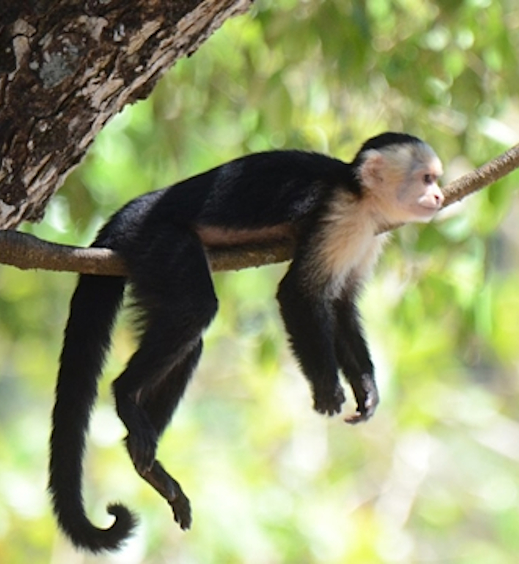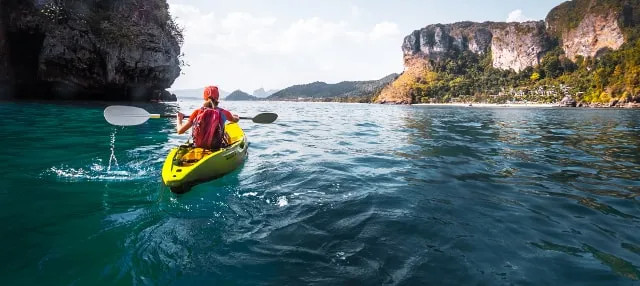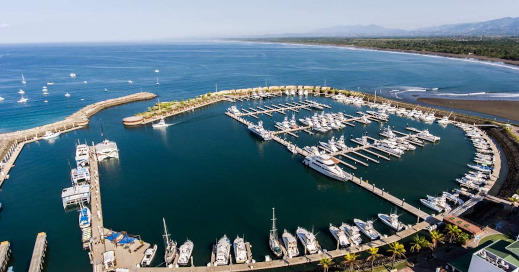Loading...

Going around trails surrounded by wildlife and resting on paradisiacal beaches are options that promise to catch your senses.
The magic of the beach and the green of the forest get together in only one place, and the result is a natural paradise. Not to mention that Manuel Antonio National Park is the protected wildlife Area that brings the most national and international tourists.
Other than beaches, the Park offers a very humid tropical forest where species of endangered wildlife, a mangrove swamp, sea environments, islands and a 14-hectare lagoon live together.
In a short drive you can go through several trails that will take you through a primary forest. You will also have impressive views of the sea and you can enjoy the wildlife that is possible to find all the time.
The Manuel Antonio National Park was born from community pressure that manifested itself against the prohibition of its former foreign owners for the use of the beaches by local inhabitants. Foreigners had a strong interest in developing the area as a touristic center. Thanks to the pressure from the community, the “beaches of Manuel Antonio National Recreational Park” was born in 1972, through Law No. 5100.
Mangrove swamp: consists of a body of fresh and salty water that covers approximately 18 hectares, it can be observed along the trails parallel to the Manuel Antonio and Espadilla South beaches. Here are the species red, piñuela and caballero mangroves.
The Waterfall: made up of a small waterfall, it can be seen only during the rainy season. Check at the park entrance for information.
Twin Beaches: a beach divided in two by a rock formation that over the years has gotten together with the sea, in that area is possible to see small pieces of stone that were detached from the bedrock. The waters of the creeks together with the sea flow, the winds and the movements of tectonic plates have given life to Twin Beaches, making it continuously change over time.
Manuel Antonio Beach: very famous for its landscape beauty, known for being one of the best and most beautiful beaches in Costa Rica, very popular for snorkeling mainly near the sides where you can see a large amount of sea life and some corals.
The Trap: another attraction that can be seen towards the right side of Manuel Antonio beach next to Punta Cathedral, when the ocean is down, it is possible to appreciate a kind of circle formed with archaeological remains, which according to its history this trap was a tool used by the natives to catch turtles and fish.
Espadilla South Beach: a wide beach when the ocean is down, although it is located in a bay, it has some strong waves during some periods of the year and it is less crowded than Manuel Antonio Beach.
Punta Cathedral: this site was formerly an island, which, due to the accumulation of sediments, joined the coast through a sandy strip called “Tombolo”. Along the path you will find three viewpoints, where you can see several islands, some are home to seabirds.
Punta Serrucho viewpoint: it is a volcanic or calcareous (calcium) type rock formation whose name of Punta Serrucho is given by its broken and irregular shape due to the movements of the earth's crust since this formation is located on a tectonic fault.
Puerto Escondido viewpoint: this viewpoint allows you to appreciate one of the most beautiful coastal marine landscapes in the Park. In addition, you will have the opportunity to appreciate when the ocean is down, one of the small sand bridges that connects some islets to the mainland of the coast.
Wildlife: this park has a great wealth of flora and fauna. Approximately 352 species of birds, 109 species of mammals, varied sea life and 346 species of plants have been recorded. Among the most outstanding fauna species you can see the titi monkey (emblem species), the white-faced monkey, the congo monkey, the 2 and 3-toed sloth, the raccoon, the coati, birds such as the toucan and many other species.

The Manzanillo tree located on the beach is toxic, do not sit under its shade, do not touch it or eat its fruits.
Enjoy nature properly, do not touch plants or wild animals, do not collect shells or snails.
We invite you to live the experience of hiking the forest through the wide network of trails and from the viewpoints located in the highest part of the Park (approximately 160 meters above sea level), to be able to appreciate the beautiful landscapes of the coast and the vegetation located in these sectors far from the beach.
To walk along the trails within the forest, it is recommended to wear appropriate footwear, it is not recommended to wear sandals and try not to make noise, do not go outside the allowed areas or climb on railings or signs.
Take care of your belongings at all times and try not to carry food that attracts wildlife. Remember it is forbidden to feed wild animals, certain products can seriously affect their health and generate changes in their behavior.
Do not interact with animals, keep an adequate distance from wildlife and do not leave food within their reach.
Help us keep the areas clean, let's not leave garbage or trace of our visit.
In the months of September and October, this park has less visitation compared to the other months, this being part of the rainy season, therefore it is recommended to visit in early hours and wear appropriate clothing.
It is important to remember that this park does not have parking for vehicles and in high season the only road that connects Quepos with the town of Manuel Antonio is very busy.
Park staff (park rangers) only work within the Park and their uniform has distinctive SINAC logos. Always remember if you need information, ask them.
In the main entrance booth there is a form to know your opinion about the visit to the park. We appreciate your collaboration.
The marina has one of the most spectacular natural settings on the planet, with mountains covered in rainforest, full of wildlife, meeting the turquoise waters of the Pacific.
A world-class marina, shipyard and commercial development with roots firmly planted in the history, culture, and stunning natural beauty of the Quepos and Manuel Antonio area.

Villa Prada is located 5 minutes (2 km) from the Marina Pez Vela and 5 minutes (2 km) from the Manuel Antonio Natural Park.
Text source: http://www.sinac.go.cr/ y https://marinapezvela.com/